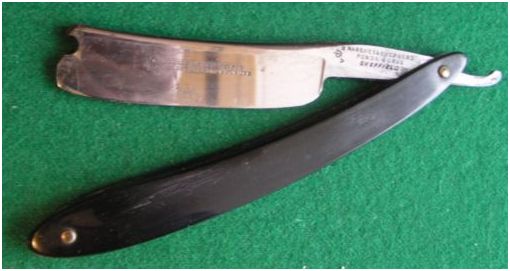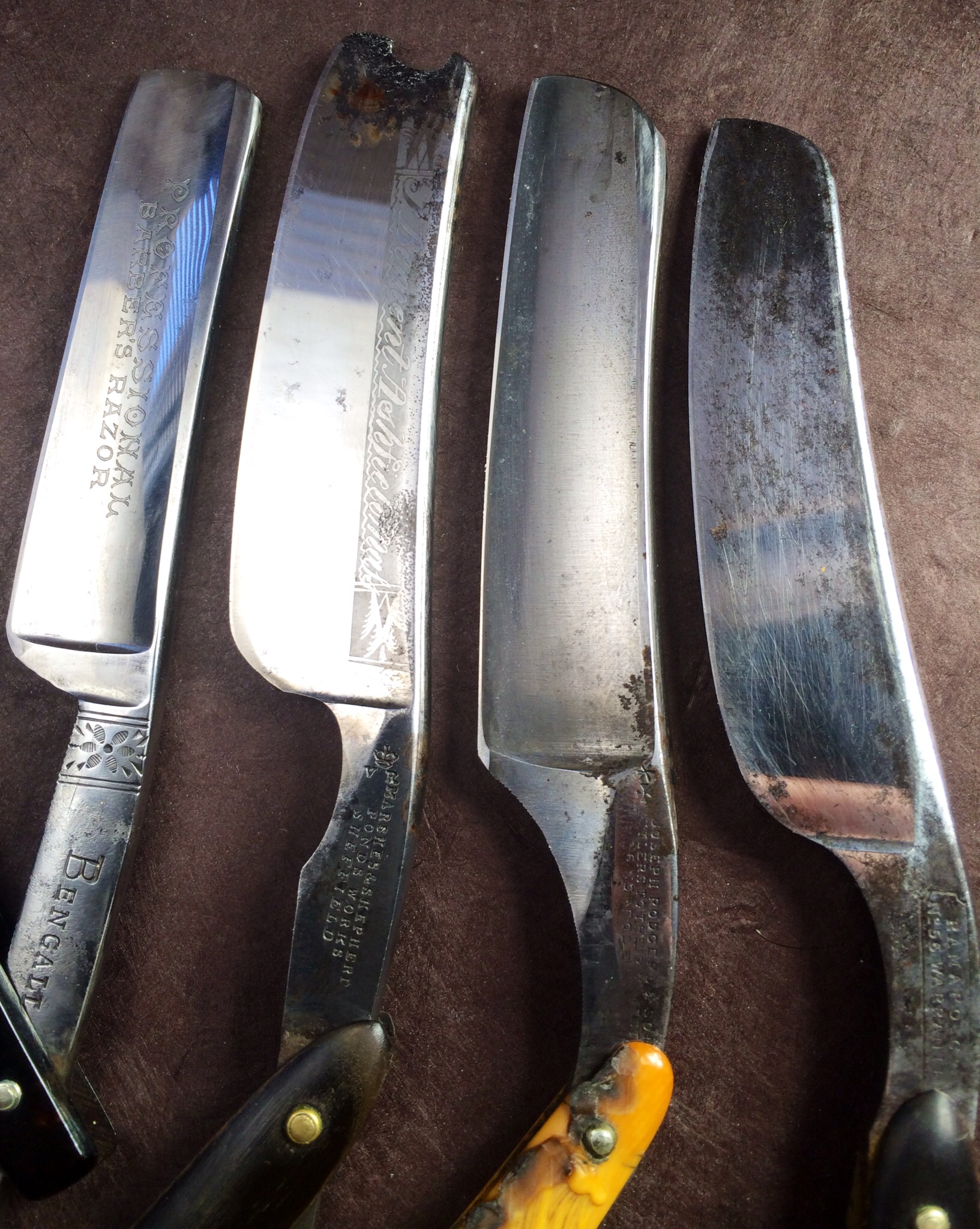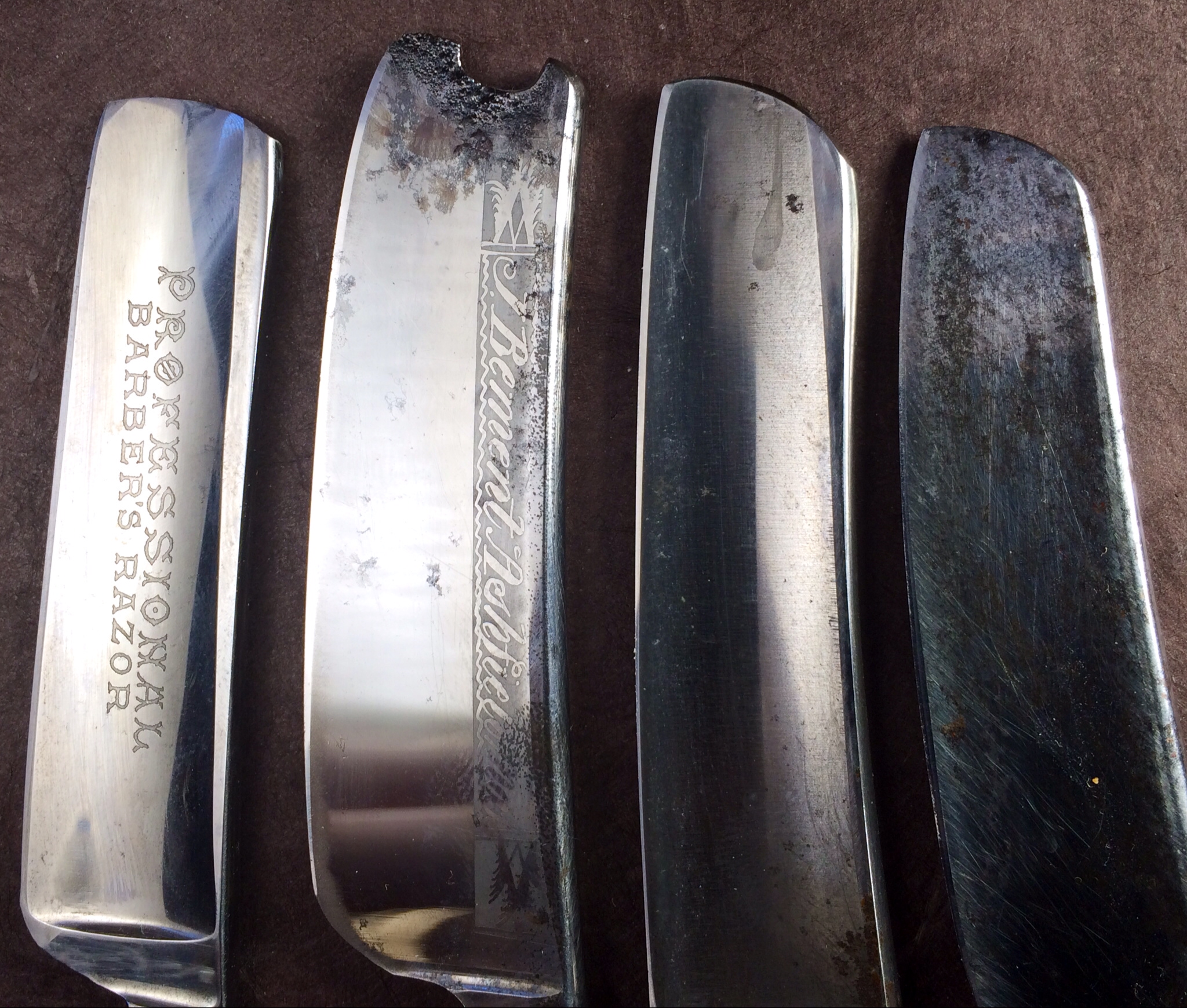Results 1 to 10 of 141
Thread: Tapered blades.
Hybrid View
-
03-08-2014, 06:07 PM #1

An illustration from a vintage advert, or catalog would be nice. At first I too doubted the tapered blade theory but seeing all of Zak's and Science Guy's examples I'm more convinced. As for the traveling grinding wheel man, (great pic BTW) I'm thinking that if the average grinder/craftsman was even barely proficient in his craft the results wouldn't have been such a drastic taper from heel to point. If I gave a razor with edge and spine parallel and received it back from the grinder/craftsman tapered like that I would probably give the guy a black eye.
 Be careful how you treat people on your way up, you may meet them again on your way back down.
Be careful how you treat people on your way up, you may meet them again on your way back down.
-
03-08-2014, 06:11 PM #2
-
03-08-2014, 06:11 PM #3

The paradox I think is that he would have had to be so bad to give all the example razors I have seen such a terrible grind but also have been so good to have perfectly erased all traces of the grinding and allowed for the bevels to be even along the whole thing, also tapering the spine to carefully match the taper in the blade. So I really think only the factory put these out.
-
03-08-2014, 06:55 PM #4Historically Inquisitive



- Join Date
- Aug 2011
- Location
- Upstate New York
- Posts
- 5,782
- Blog Entries
- 1
Thanked: 4249
In all honesty, i must say im not convinced myself. Never ran into any documentation about a tapered blade, or provenance of such a type of razors. And actually some of them just look like they have a slight smile, from unexperienced honing or added on purpose.
I could see how easy it would be to make this razor pictured below look like a tapered blade?
Please note that this razor is from the same period as the tapered blade razor posted in this thread.

-
03-08-2014, 07:19 PM #5

Martin, are there catalog or advertising illustrations for blades from that specific time period extant at all ? If there are the absence of tapered blades might say quite as much as the inclusion.
 Be careful how you treat people on your way up, you may meet them again on your way back down.
Be careful how you treat people on your way up, you may meet them again on your way back down.
-
03-08-2014, 07:47 PM #6

I've been looking for an old document I remembered from Judge Lummus ("Old Sheffield Razors" by Lummus. Antiques, December 1922), and he talked about it in the second paragraph of the first picture as "straightbacks", and the "T" of the second picture is one of those.


I still don't see the point about making razors this way, but I'm beginning to believe it a lil more.
Edit : Well.. I just noticed you talk about Lummus in your Birmingham thread..Last edited by Thaeris; 03-08-2014 at 08:14 PM.
-
The Following User Says Thank You to Thaeris For This Useful Post:
JimmyHAD (03-08-2014)
-
03-08-2014, 08:17 PM #7

Great work Thaeris ! AFAIC that is proof enough for me.
 Be careful how you treat people on your way up, you may meet them again on your way back down.
Be careful how you treat people on your way up, you may meet them again on your way back down.
-
03-08-2014, 08:25 PM #8

It's still not a picture from an advertising from the same period, but it was almost 100 years ago, so I guess they remembered better what was originally made and what was a used razor.
Martin you would notice that there's a ; between the straightback part and the barber use part.
But I'm not fully convinced myself. I just find this less unbelievable
Last edited by Thaeris; 03-08-2014 at 08:28 PM.
-
03-08-2014, 08:23 PM #9Historically Inquisitive



- Join Date
- Aug 2011
- Location
- Upstate New York
- Posts
- 5,782
- Blog Entries
- 1
Thanked: 4249
The "Straightbacks" razors hes talking about in this article with inscription "For barbers Use" etc are not the tapered blades we see in this thread. Razor T in this article was allready 90 years old when the article was written.
As somebody suggested im beginning to think that this type of grinding was probably a fad with street grinders of that period, seems like all the razors in question are from Sheffield .
-
03-08-2014, 08:25 PM #10

There are multiple different things that argue in favor of them being made that way.
- The spine tapers along with the blade
- The quill-profile makes it easier to see that spine width isn't from honing
- The great bulk of them are so similarly designed
- They come from such a narrow period
These pictures might help, too.
(You can right-click and 'view image' to see a full resolution version)

Two of these were razors that I contend were 'designed that way' and two of them were 'abused that way'.
And a closeup:

(I sincerely wish the J. Bement weren't so corroded a the point, but it doesn't interfere with shaving).
It should be pretty clear that the razors that were designed to have a tapered blade have a very different kind of spine wear than the ones that were honed with pressure on the point. There was absolutely no way to regrind that Marshes & Shepherd to remove hone wear AND preserve that spine etch, though admittedly, that particular razor is somewhat less pronounced in its taper, but there are enough others like it (some pictured in this thread, even!) to make it clear the blade was designed to have a taper.
As to the benefits, I'll attest that it's a fantastic design for shaving into and around mustaches and sideburns.
But it would likely have fallen out of fashion because it's just not as easy to hone them well as it is a typical design from the era. You have to roll the pressure along the spine. It's easy to get most of the blade honed right, but keeping consistent (light!) pressure into that tapered point is a real challenge, and if the point isn't as sharp as the rest of the blade, you lose the benefit of the shape. So it's both useful and not practical for the average user.-Zak Jarvis. Writer. Artist. Bon vivant.


 343Likes
343Likes LinkBack URL
LinkBack URL About LinkBacks
About LinkBacks








 Reply With Quote
Reply With Quote
